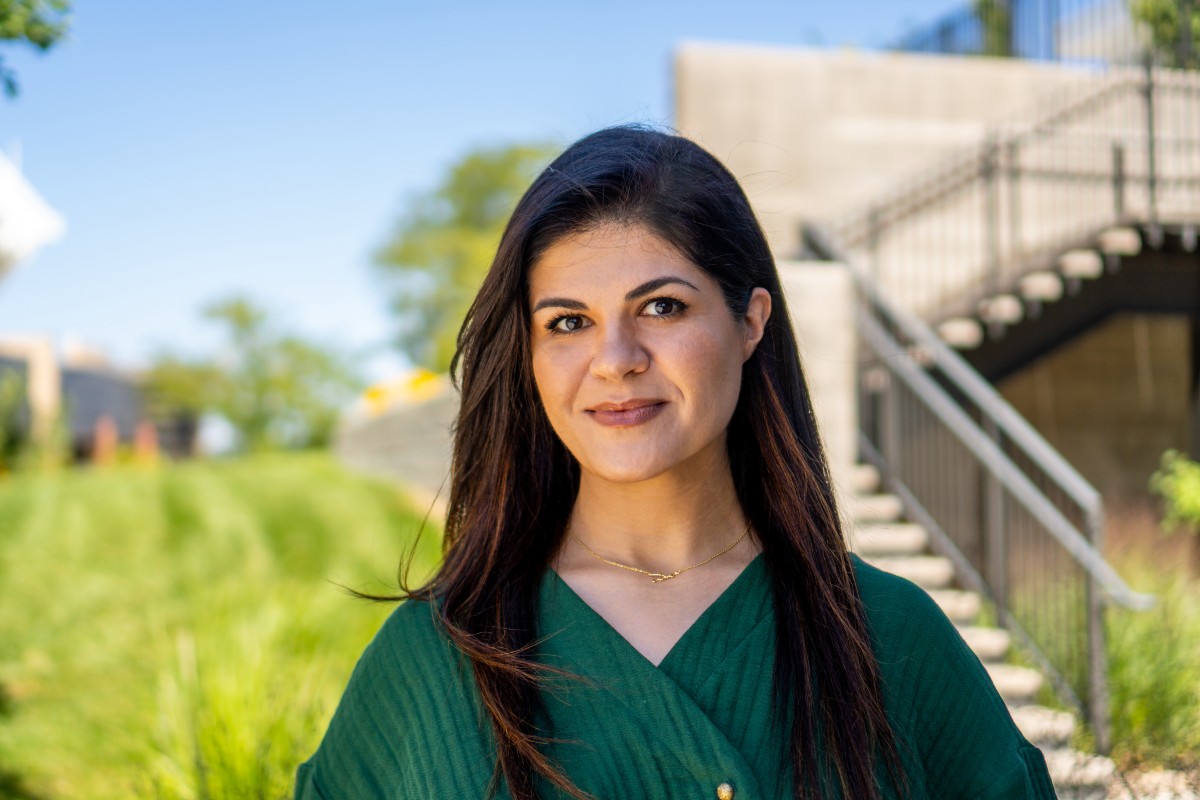
An assistant professor in the Department of Design and Merchandising at Colorado State University, Lida Aflatoony brings expertise in user-centered design and human-centered design approaches. Aflatoony’s interests include meeting the needs of underserved markets such as people with disabilities.
Tell us a bit about yourself!
I am from Iran, and I received my Ph.D. in textile and apparel management at the University of Missouri and my M.F.A from Polytechnic University of Milan in Italy. Outside of academia, I enjoy sports such as hiking, jogging, and swimming. I also like to paint using watercolor, oil, and colored pencil. Moreover, I like to spend time with cats and dogs. In my free time, I like to go to a cat café.
What brought you to Design and Merchandising at CSU?
An equipped and technological apparel lab at the Department of Design and Merchandising at CSU is an ideal place for any designer/researcher to conduct and explore design research. Also, having supportive and caring colleagues in the department assists any new faculty in immediately feeling at home. Moreover, having colleagues with similar research interests at DM provides an excellent collaborative opportunity for future research.
What are your research and/or teaching interests, and how did you get interested in that topic?
As a design researcher with expertise in user-centered design, human-centered design, and design education, my passion is employing design approaches and methods including the Human-Centered Design approach (e.g., design thinking) and User-Centered Design methods (e.g., participatory design PD). These methodologies are not only being used in the design and development of functional apparel that truly meets human needs, but they provide a solution needed to address critical challenges for underserved markets. Moreover, these methodologies are foundational to the three overlapping areas that combine to form my research focus: sustainability, technology in apparel production, and design for underserved market needs.
I believe that my past and current research have provided a strong sense of direction for my future research topic choices for two main reasons. First, in addition to gaining knowledge and expertise, I have developed my research passion. My passion is for under-served market needs; developing new ways to respond to users’ needs with innovative design strategies. My previous research experience on market needs in clothing for people living with a disability such as vision impairment has led me to believe there are many more gaps in that field that need to be studied. Second, my previous experience with colleagues in fields such as Computer Science, Architecture, and Engineering has set the stage for future research.
I hope to develop interdisciplinary collaborations throughout STEM (Science, Technology, Engineering, and Mathematics) fields to take advantage of cutting-edge technological ideas and apply them to textile design. This type of interdisciplinary research can address issues and find solutions for underserved market needs. In addition, these technologies can be used to optimize processes in both HCD and UCD methods to increase sustainability for all markets.
What is your teaching philosophy?
My philosophy of teaching is about implementing diversity and equity in the classroom. A quote by John Wooden exemplifies this: “Seek opportunities to show you care. The smallest gestures often make the biggest difference.”
One of the critical and valuable subjects in our society today is equality and social justice. In my opinion, a teaching-learning technique that encompasses those values and respects everybody equally is the most desirable method to incorporate into the classroom. Incorporating equality in education can’t be achieved without building a positive teacher-learner socio-academic relationship and creating a friendly atmosphere.
In addition, “equality” in education can’t be achieved without creating an engaging classroom environment for learners. In practice, an effective and equal teaching-learning environment engages every single student in a variety of ways and enables students to develop to their full potential.
What is your favorite thing about CSU and the campus?
My favorite thing about CSU is CAM The RAM. He is the sweetest mascot. In my free time, I would like to paint a portrait of him and hang it on the wall of my office at Nancy Richardson Design Center. Also, I like the CSU campus, the weather in Fort Collins, and the cheerful students.
The Department of Design and Merchandising is part of CSU’s College of Health and Human Sciences.